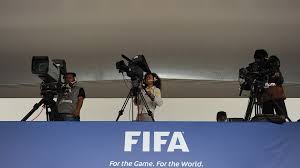By David Owen
October 21 – Women’s football is on a roll – and more power to its elbow for that. Nonetheless, the viewing figures for this summer’s Women’s World Cup, released at the end of last week to some fanfare, deserve to be treated with a certain amount of caution.
First and foremost, it cannot be emphasised enough that the headline figure of 1.12 billion said to have watched France 2019 in some way shape or form includes those who tuned in/logged on for as little as one minute. So this total will capture people who speculatively flipped across during an ad break in their favourite soap opera or reality TV show. I am not claiming that either FIFA or Publicis Sport & Entertainment, who compiled the figures, seek to hide this; they do not. It’s just that this sort of detail tends not to come across in the sound-bites.
Not much more than half – 54.4% – of those who tuned in for at least one minute managed to make it past the 20-minute mark, and this for a tournament comprising 52 matches, hence upwards of 4,680 minutes of live action.
The 540.7 million TV viewers who did watch for 20 minutes or more represented a 65% increase from the last tournament in 2015. Some of this increase – notably in Brazil, where Globo was involved, having not broadcast the 2015 competition – was down to improved accessibility rather than greater interest per se. Having said that, free-to-air broadcasters who showed 2019 but not 2015 would presumably not have done so had they not felt the underlying interest warranted their involvement.
The 19-page report produced by Publicis also underlines the huge role of one country – China – in getting some of the numbers up. Of that 1.12 billion minimum one minute global total, for example, China is said to have contributed 342.6 million. That is comfortably more than the whole of Europe.
By contrast, it was Europe that seems to have hosted the most dedicated viewers. Of almost 2.5 billion hours of coverage consumed globally, Europe was responsible for 43.7%. Furthermore, Europe-based viewers who watched at least a minute’s coverage went on to watch an average of more than four hours. That was more than double the equivalent figure for the rest of the world. Of course, not only was the tournament staged in Europe, ensuring viewer-friendly kick-off times, but seven of the eight quarter-finalists were European. Consumption in the eight European countries with competing teams accounted for over 90% of the regional total, suggesting that patriotism may have been more significant than out-and-out love of the women’s game in determining viewing habits.
The average live match in the tournament had an audience of 17.3 million viewers, more than double the 2015 figure, while the final, pitting red-hot favourites the United States against the Netherlands, was said to have attracted an average live audience of 82.2 million, up 56% on the 2015 final.
With regard to those who watched matches on devices other than televisions, and what proportion of them consumed the action only on such devices, the methodology for assessing numbers still seems to me a little opaque. According to the report, “It is estimated that 481.5 million people accessed coverage of the Women’s World Cup on digital platforms (based on survey research carried out by Nielsen on behalf of FIFA)”.
The report continues: “Using survey data in key markets, it was possible to establish the reach ratio of each touchpoint…through which individuals consumed World Cup content (television in-home, out-of-home, digital platforms including apps and websites). These ratios were then applied to audited in-home television reach figures…to produce “de-duplicated” non-television reach.”
The conclusion was ultimately reached that just under 124 million people watched the tournament exclusively by means other than in-home television sets. This represents an “uplift” of 12.5% on those who did resort to TV at some point. Whether accurate or not, this does strike me as a plausible claim.
China is once again worth singling out in this context, since, the report states, it provides the majority – 58% – of all digital viewers.
Out-of-home viewing and digital devices played an especially important role in pushing the live global one-minute reach of the final up to 263.6 million viewers.
Only just over 178 million of these are said to have been watching on their in-home televisions. That means a further 85.5 million accessed coverage via other means. That is equivalent to an uplift for the competition’s grand finale of around 48%.
How long will it be before a majority of viewers for big set-piece sports occasions are watching the game somewhere other than clustered around the living-room TV-set?
Contact the writer of this story at moc.l1751478608labto1751478608ofdlr1751478608owedi1751478608sni@n1751478608ewo.d1751478608ivad1751478608

